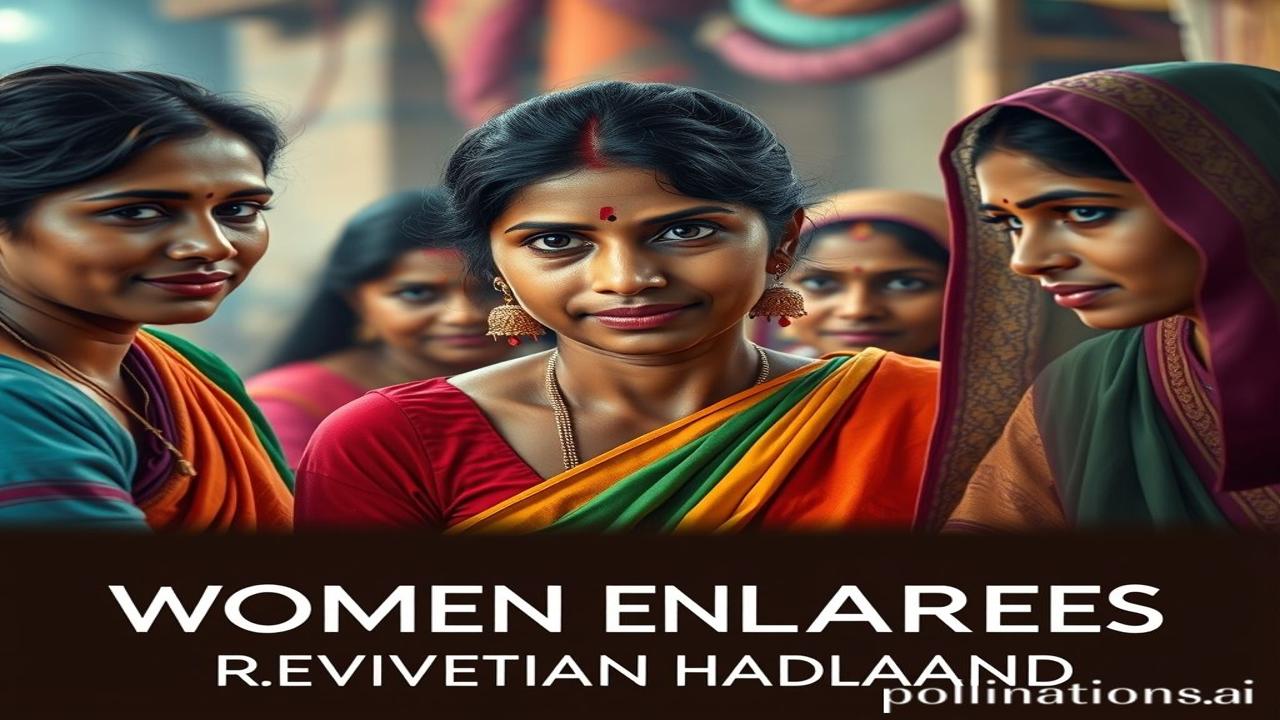Threads of Time: When Women Weave Magic Back into Forgotten Crafts
Kabhi kabhi, jab main purani Delhi ki tang galiyon mein chalti hoon, I imagine the echoes of generations past. The scent of sandalwood and spices mingling with the rhythmic thak-thak of looms. The vibrant colours of silk and cotton dancing in the sunlight. Waqt ki dhool mein dabi yeh kahaniyan, the stories whispered by nimble fingers, are now being brought back to life, thread by thread, by a new generation of women entrepreneurs.
Bharatiya Parampara: The Legacy of Indian Crafts
For centuries, India has been celebrated for its rich artistic heritage. From the intricate embroidery of Gujarat to the vibrant textiles of Rajasthan, our traditional crafts are not just beautiful objects; they are living embodiments of our history, culture, and identity. These crafts, passed down through generations, often within families, represent a deep connection to our dharohar, our heritage. They are the soul of Bharatiyata.
But globalization and mass production threatened to extinguish this flame. Many artisans struggled to compete with cheaper, machine-made alternatives. Their skills, their livelihoods, and their cultural legacy were at risk. This is where the story takes a turn, powered by the shakti of Indian women.
“Chalo, Phir Se Banaate Hain”: The Women Leading the Revival
Imagine a small village in Bihar. A woman named Rani Devi, a mother of three, watching her family’s traditional Madhubani painting skills fading away. Years ago, her mother taught her the art, telling stories of gods and goddesses as her brush danced across the canvas. Now, Rani Devi saw the art, a symbol of her identity, was dying with her generation.
One day, Rani Devi decided enough was enough. She gathered a few other women in the village, and they formed a self-help group. They started creating Madhubani paintings and selling them at local markets. Slowly, word spread. Soon, their art was being recognized beyond their village, even internationally. Rani Devi and the other women were not just preserving their art; they were empowering themselves and their community.
This is just one example. All across India, women are leading the charge in reviving traditional crafts. They are learning forgotten techniques, adapting them to modern tastes, and using technology to reach new markets. Whether it’s the delicate chikankari embroidery of Lucknow, the vibrant kantha stitching of Bengal, or the intricate beadwork of Gujarat, women entrepreneurs are breathing new life into these ancient traditions.
Cultural Significance Today: Connecting the Past to the Future
Today, these revived crafts are not just found in museums or dusty antique shops. They are being integrated into modern homes, wardrobes, and lifestyles. You see ikkat textiles in contemporary clothing designs, block-printed fabrics in stylish home décor, and handloom sarees being celebrated as symbols of sustainable fashion.
This revival is more than just about preserving art; it’s about connecting to our roots. It’s about appreciating the skill and artistry that has been passed down through generations. It’s about supporting sustainable livelihoods and empowering communities. It’s about celebrating Bharatiyata in all its vibrant and diverse glory.
Myth-Buster: It’s Not Just “Handicraft”, It’s Art!
Log aksar samajhte hain ki “handicraft” bas ek shauk hai, ya phir kuch cheezon ka business. Lekin asli sach yeh hai that these crafts are profound artistic expressions that carry centuries of history and cultural significance. The artisans are artists, storytellers, and custodians of our heritage. They are not just making products; they are creating living memories.
Sensory Symphony: The Sounds and Smells of Creation
Imagine walking into a workshop filled with the scent of natural dyes and the rhythmic clatter of looms. Feel the rough texture of raw cotton and the smooth coolness of hand-painted silk. Hear the women laughing and chatting as they work, sharing stories and passing down traditions. These crafts are not just visual; they are a sensory experience that connects us to the past.
A Final Thought: The Shakti of Tradition
As we move forward, let us remember the importance of preserving our cultural heritage. Let us support the women entrepreneurs who are leading this revival. Let us appreciate the beauty and artistry of our traditional crafts.
As the great poet Rabindranath Tagore once said, “You can’t cross the sea merely by standing and staring at the water.” Similarly, we cannot preserve our heritage by simply admiring it from afar. We must actively engage with it, support it, and celebrate it.
Kala mein hai shakti, shakti mein hai bhavishya. (There is power in art, and in that power lies the future.)
